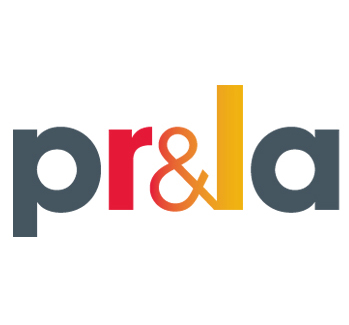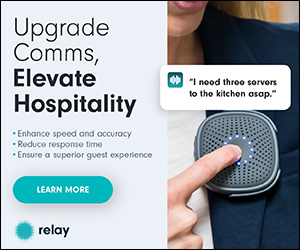The coronavirus forced restaurant owners and operators to make rapid-fire decisions under the most stressful conditions, without the benefit of a master class or 800-page contagion manual.
First the mandated closings: You are oh-so-lucky if you have a drive-thru, to-go, or delivery operation scoring a high percentage of your normal sales. For restaurant operators with sit-down restaurants and doors locked, life is a scene from Bill Murray’s Groundhog Day. Each morning an alarm goes off and you say to yourself, “I can’t believe this is happening.”
It has happened, it’s happening right now, and you must survive. How do you deal with your landlord, your bank or, your suppliers? How do you ramp up a dining room with a yet-to-be disclosed set of social distancing regulations? How do you attract a consumer that insists on white-glove sanitation? And finally, how do you get the funds to reopen?
Let’s stipulate a few things thing right off the bat. If you weren’t making money going into St. Paddy’s Day, you shouldn’t be in a big hurry to reopen. In fact, if you were feeding your place with nest egg funds before the shutdown orders, think long and hard about whether you should just flip the keys to your landlord and call it a day.
For those who are inspired to make a go of it, on the following pages are some ideas for coming out the other end of this nightmare as a winner.
Landlords
Joe McKesko is a real estate pro in Chicago and makes his living sparring with landlords. On a webinar I moderated last month, he told the audience what he believes will happen to rental rates after a near-total shutdown of the industry: “What restaurants pay in rent is only going to be based on what they can afford based upon their economic model,” said McKesko. In other words, rents are coming down.
You’ve probably sat with your landlord to discuss your immediate cash flow crisis, but don’t do anything rash. Now is the time to be a long-term thinker. Your landlord may allow you to defer rent for a few months, but how are you going to pay that all back in the fall, or even into next year. Try for abatement or percentage rent first, but realize a deferment must be spread out. Also, don’t agree to a lease extension unless it’s in your best interest. You may not want more term on a location that’s borderline.
Wall Street restaurant analyst Mark Kalinowski suggested a week ago in his weekly report that percentage rents might become the new industry norm. Restaurant landlords probably will disagree. They have loans, too, and they like fixed rent. For years they’ve demanded, and received, a fixed minimum rent based on the greater of the market rent, or a capitalized rate on their investment. If your landlord has a better alternative standing by than you, and you want to stay in the location, then you have to accept his terms. If not, it’s time to do battle.
Banks
Banks are deferring principal payments. That’s happening all over the country. If you’ve been a good bank customer, get a plan together and sit down with your banker. One thing people will learn from this crisis is the importance of having a good banking relationship. Most of the restaurant operators in the country that received Paycheck Protection loans in the first round received them because of the relationship.
Suppliers
You may still owe money for food and supplies that were delivered to you restaurant before the crisis began. That’s understandable. It‘s not in the best interest of your food distributor and other suppliers to put you out of business. However, suppliers tell us it will be on a case-by-case basis (no pun intended), and if you need credit, you’ll have to show them how you intend to pay them back.
Employees
More than 26 million people in the United States have lost their jobs in just the past five weeks. Still, you may run into problems hiring back people, especially now that the federal government is paying a $600 per week supplement until July 31—on top of state unemployment. If you want to reopen, you’ll probably have to pay more to entice them back. Don’t forget those employee heroes that stuck by you—pay them bonuses and higher hourly wages, too.
Sanitation
Social distancing and crowded dining rooms are like placing two north poles of a magnet near each other. You’ll have to re-examine every aspect of your operation before the dining room reopens. CEO Todd Graves from Raising Cane’s said he is taking out half of the tables and putting X’s on the floor to designate where customers should stand to maximize social distancing.
Expect your customers to return to your restaurant slowly and know that many of them will now be germophobes. QSR operators are talking about reinstating a dining room attendant to clean and bus tables. Buffet operators will have employees don masks and gloves to dish out food, similar to the old cafeteria operations.
Cost-saving tools that were put in place years ago also must be re-examined. For instance, how safe are the hand blowers in the bathrooms, or the order kiosks on the tables? How clean are the trays in a QSR restaurant, or the self-serve ketchup and mustard dispensers? How about the freestyle soda machines, how often will they be cleaned? What about the laminated menus? They already looked grimy.
Take-Out and Delivery
Do you remember the scene in The Graduate where a neighbor friend of Mrs. Robinson tells the young Dustin Hoffman to focus his career on “plastics”? You could say the same thing today in the restaurant business about “delivery.”
If you sat out the past few weeks with no off-premise strategy, you better get up-to-speed soon. Food on Demand News (foodondemandnews.com) is a good place to start learning more about take-out and delivery. If the coronavirus resurges in the fall and next spring as it did with the 1918 Spanish flu, non-pizza, non-drive-thru, and delivery-inefficient restaurant owners will find themselves in the same boat they are in today.
Funds to Reopen
If your restaurant is closed, you may need to raise funds to reopen it. Don’t underestimate how much it is going to cost to buy inventory and train new employees. It will be expensive. One option is to approach your existing lender. Put together conservative projections and ask for an extension of your existing credit to get the restaurant back open. If the bank is unwilling, you may have to raise money privately.
Many of the sources of funding operators use when a new restaurant is growing will need to be revisited. They include options like private placements, crowd funding (both equity and the tried-and-true rewards approach), landlord assistance, and of course, friends and family.
Summary
The U. S. economy will eventually rebound, that much is for sure. But, it may not come back as soon as we want. Previous economic panics in American history, such as the panic of 1893 or 1907, are useful in estimating the timing of improved economic activity. In both financial panics, banks, investments firms, and thousands of businesses failed, and it took four to five years for the economy to regain its pre-panic strength.
Restaurant owners should expect a gradual return to normalcy over the next 12 to 24 months. Customers will come back to restaurant dining rooms when they feel comfortable doing so. A recessionary economy also means value will be a primary desire of the consumer.
My heart goes out to independents, the majority of which operate sit-down restaurants. I know how hard this is and how much blood, sweat, and tears they’ve invested in their restaurants. The virus is going to result in a large number of restaurant closures. However, America is a creative place. Entrepreneurial individuals are already dreaming up new concepts. It will take two to three years to clean up this mess, but then watch out, new ideas and energetic operators will find a much broader runway. •
John Hamburger is president of Franchise Times Corp., which publishes Franchise Times magazine (www.franchisetimes.com) and the Restaurant Finance Monitor (www.restfinance.com).











